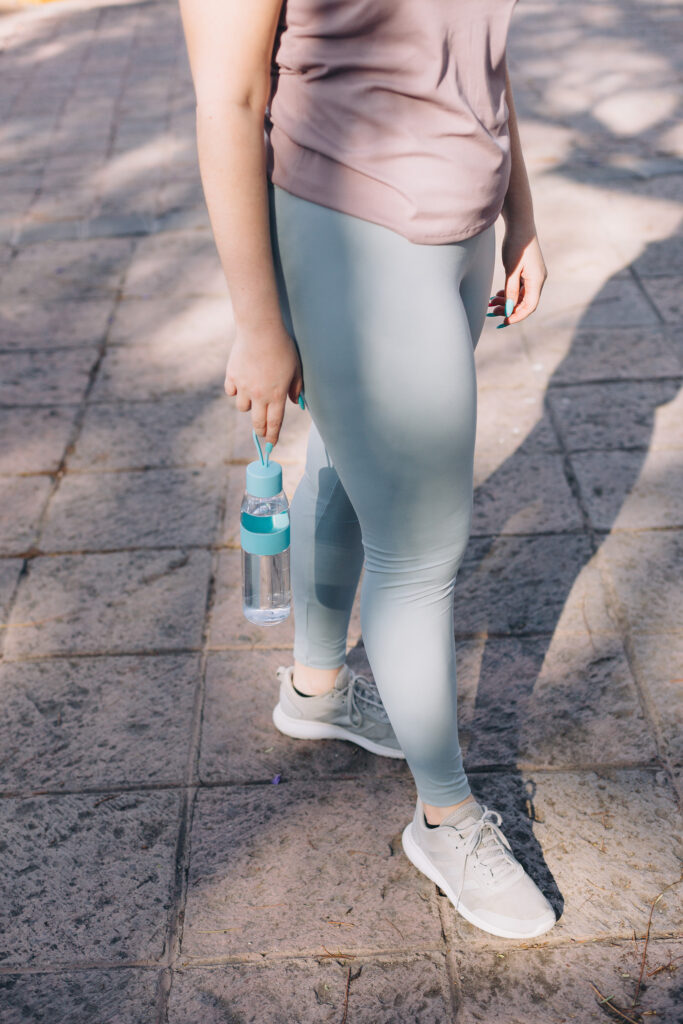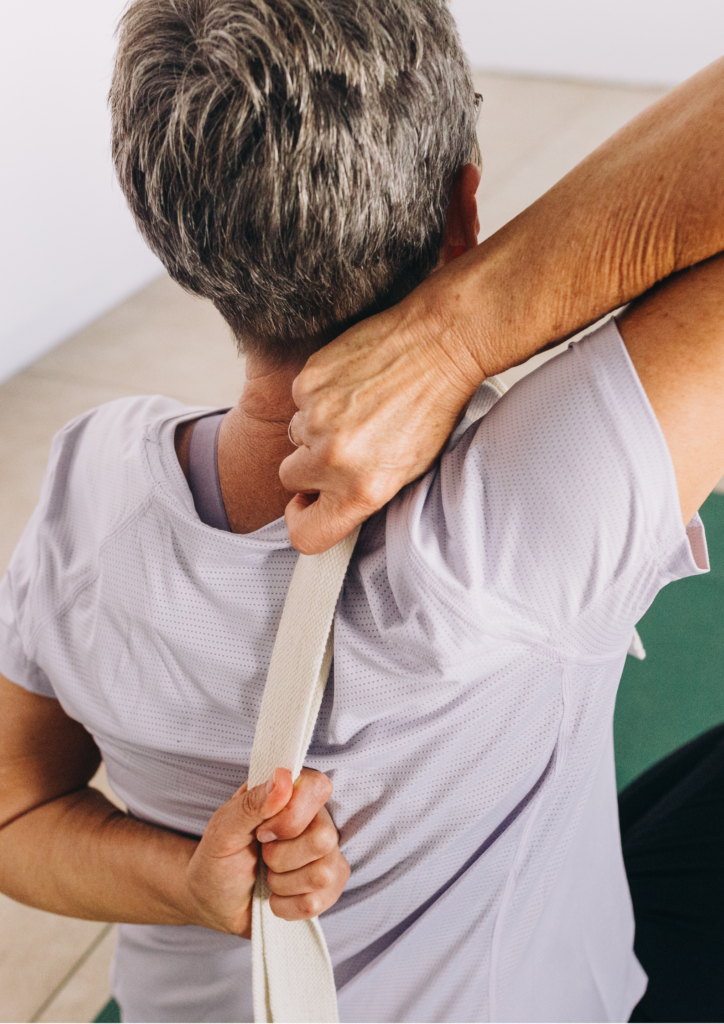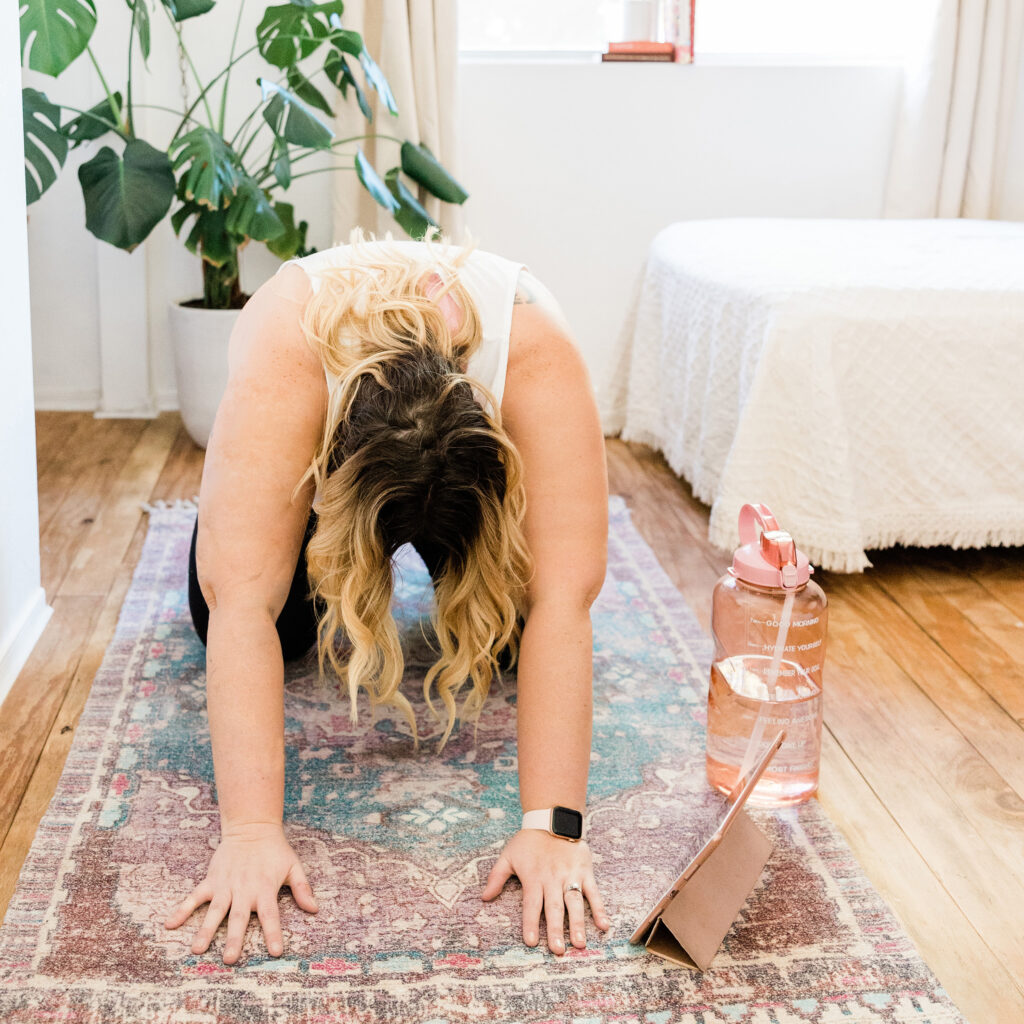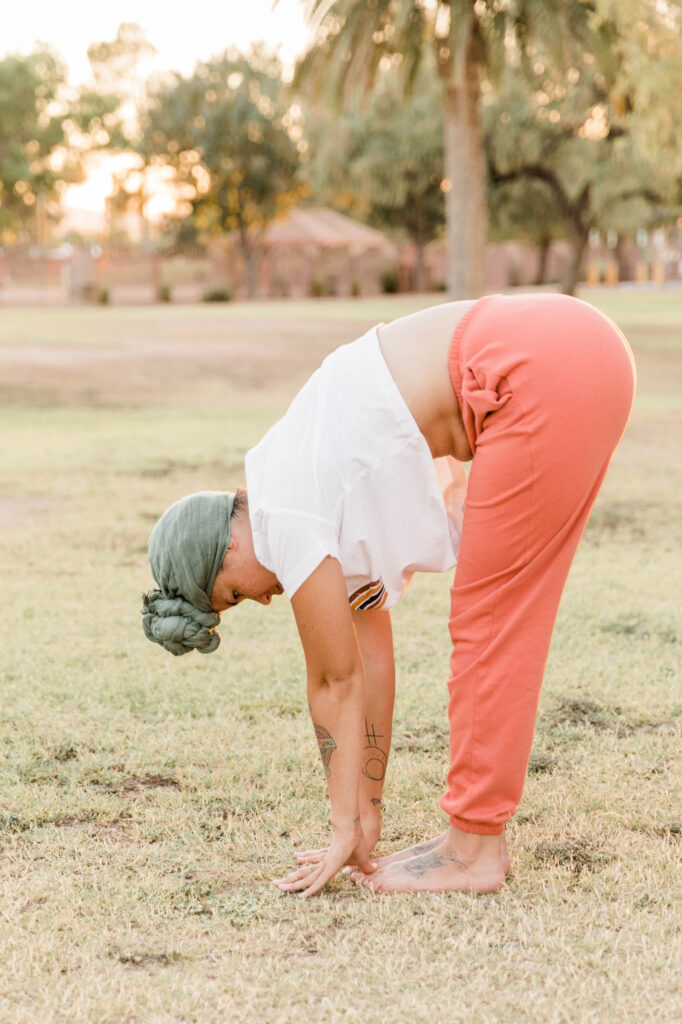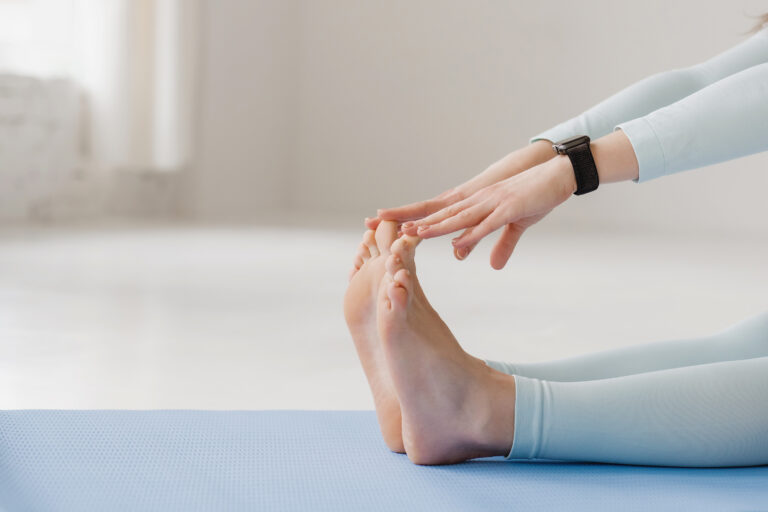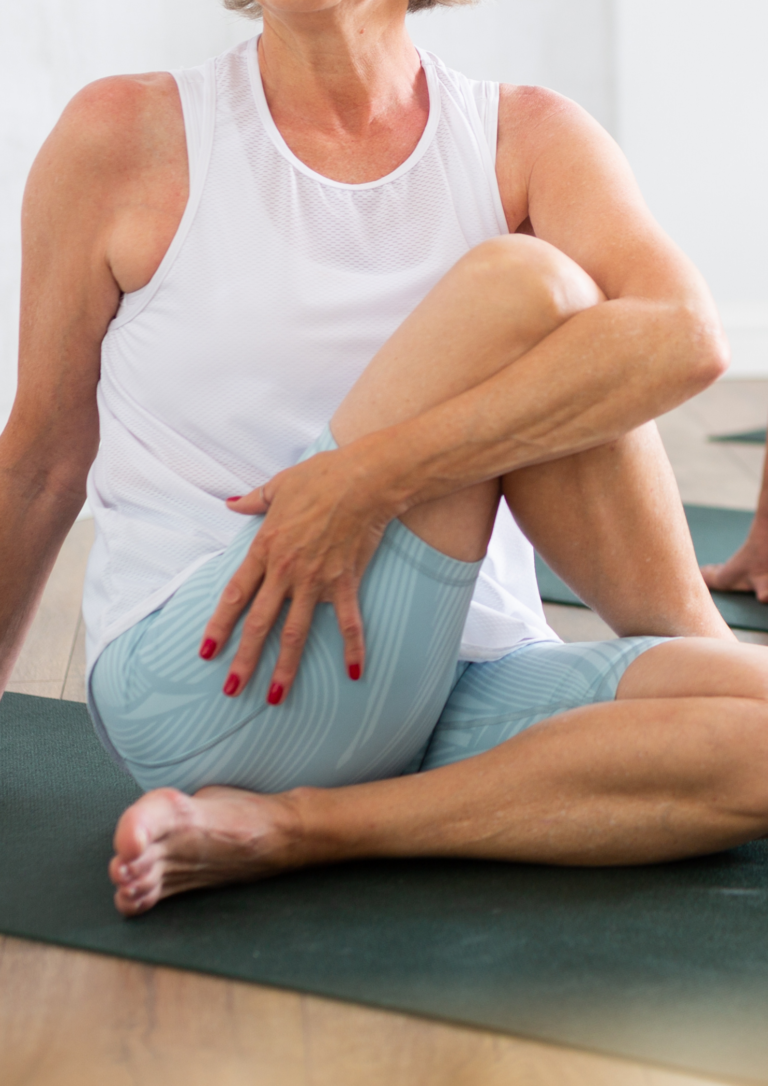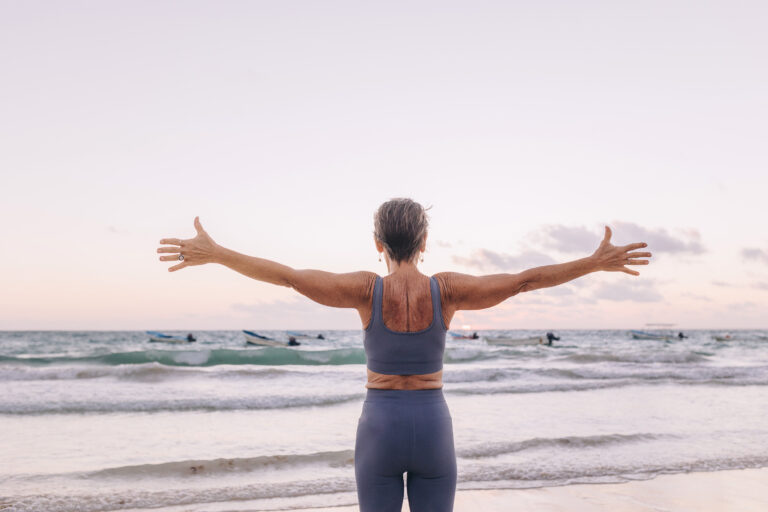Welcome to Phase 2 on how to increase muscle tone for women after 50! In this post, we’ll cover how Phase 2 of exercise training builds on the stability foundation established in Phase 1 by introducing exercises that strengthen the prime movers—the muscles responsible for generating the most force during movement.
These workouts will allow you to thrive through feisty menopause and promote healthy aging by learning to progress towards maintaining muscle mass, support joint health, and improve your overall strength for daily activities. To achieve this, we’ll use a superset sequence, where each strength-building exercise is immediately followed by a stability-focused exercise with similar joint dynamics. This approach not only enhances muscle coordination and control, but also maximizes strength gains by building lean muscle mass without compromising stability. By pairing these exercises, we create a well-rounded training effect that supports both functional movement and long-term resilience.
Building the Frame of Your Fitness Journey
Your strength training routine is progressing along at a safe and exciting pace by moving into Phase 2! If you haven’t read the post Phase 1: Stabilization Training for Women 50+, please do so before proceeding.
Now, transitioning into the next exercise phase is certainly something to celebrate when it comes to healthy aging, as it’s proof that you’re working hard and remaining consistent towards your muscle strength and exercise journey.
Never hesitate to celebrate the big or small wins when it comes to your body and the physical activity it’s capable producing.
Before digging in deeper, let’s go ahead and recap Phase 1, Stabilization Endurance: This is an absolute must stage of exercise training that everyone, from the beginner to the alite athlete, must visit. This phase focuses on appropriate body alignment and the stabilizing strength necessary to maintain proper body alignment.
Phase 1 increases the strength in your tendons, ligaments, joints, cartilage, bones, muscle tissue, other human movement systems, and not to mention your mental wellness to create and build a powerful, efficient working… you!
Basically, in a nutshell, Phase 1 of your strength training journey is building a solid foundation that will allow you to be strong from the ground up, to feel less pain, and experience fewer limitations so you can live a life you love while navigating perimenopause, menopause and other body changes.
It’s important to understand that the phases of exercise training are smaller, structured progressions that fit within larger training levels, each designed to build on the previous one for steady, safe improvements within the physical activity guidelines.
Each stage during the different phases of exercise training has a designated purpose that provides you with a systematic approach for progressing toward your workout goals, while addressing specific needs, and keeping muscle repair and safety as a top priority.
Let’s look at it this way…
Think of Phase 1 like building a house: When building a house, you start with a strong foundation. Just as you wouldn’t begin the construction of your new home with the roof and appliances, your fitness journey needs a solid foundation of stability and endurance first. Now, as we move into Phase 2, we’re building the frame and walls, adding structure and strength to support everything that comes next.
Phase 2: What to Expect & Why You Need It
Level 2 of fitness training consists of 3 phases, the first phase within this level of weight training being the Strength Endurance Phase.
The goal in this specific phase is to enhance stabilization endurance while increasing prime mover strength and build up your aerobic activity.
In other words, we’re teaching your body to be both sturdy and strong—like building a solid tree trunk and giving it power to grow big branches. We’re also boosting your energy system so you can go longer without your craft beer running out of carbonation!
We delt a lot with stabilization in Phase 1, we completed exercises that would focus on total body stability while developing optimal neuromuscular efficiency, or coordination. An example exercise of this dynamic that is found in Phase 1 is an elevated (wall or bench) palm plank, into a floor plank, then a stability ball plank. Now, in Phase 2, we’re pairing those stability focused exercises with exercises that increase prime mover strength.
Prime movers are the muscles that act as the initial and main source of motive power during bodyweight exercises and strength training exercises.
These two adaptations, stabilization and prime mover strength, are accomplished by performing two exercises in what’s called a superset sequence, or a ‘superset’. A superset is a set of two strength training exercises that are performed back-to-back, without any rest time between them.
The two exercises performed within the superset will have similar joint dynamics and aim to build lean muscle mass and muscle endurance. Such as, let’s say the first exercise you perform is a tradition strength exercise in a stable environment, a bench press, whereas the second exercise is a stabilization exercise performed in a less stable, yet controllable, environment, a stability ball pushup.
The principle behind this method is to work the prime mover predominantly in the first exercise, the bench press, to elicit prime mover strength. Then, immediately follow with an exercise that challenges the stabilization muscles, stability ball push up. Another example could include a floor glute bridge, a stable exercise, then immediately perform a Bosu ball bodyweight squat, a less stable balance exercise.
This strength training system produces an increased ability to maintain postural stabilization and dynamic joint stabilization while completing a resistance exercise back-to-back.
Let’s look at it this way…
This training style helps your body stay balanced and strong. Imagine hiking a long, rocky and uneven trail. While this hike has its challenges, you’ve built the necessary strength, a steady core, and surefooted joints to keep you agile without needing to rest. So, even when the terrain (or exercises!) keep changing back-to-back with little to no rest, you have the endurance to stay steady and keep going!
Now, let’s dig into the bench press followed by a stability ball pushup example again. Imagine performing these two exercises:
First, the bench press is being performed in a stable and controlled manor, you’re lying on a bench using weight that feels safe for you. You’re able to maintain posture, focus on breathing and proper exercise execution. Then, with no rest, you immediately move to the stability ball pushup. Unable to take rest is a challenging dynamic for sure, then add on top of that the challenge to maintain postural control while you’re engaging almost your total body, mainly your core, to avoid toppling over the stability ball.
You have to focus on proper breathing techniques while your body is under more stress and focus on the ability to execute this exercise adequately!
Goals & Strategies: Your Blueprint to Success
Goals:
- Enhance Prime Mover Strength – Develop strength in the primary muscles responsible for movement.
- Maintain and Improve Stability – Continue reinforcing core and joint stability to prevent injury and support movement efficiency.
- Increase Muscular Endurance – Build the ability to sustain strength and stability over time.
- Improve Functional Strength for Daily Activities – Ensure that strength gains translate into real-life movements, such as lifting, reaching, and carrying.
- Support Bone Density and Joint Health – Utilize strength training to maintain bone mass, build lean muscle mass, and reduce the risk of osteoporosis and joint discomfort.
- Boost Metabolism and Fat Utilization – Increase muscle mass to support a higher resting metabolic rate to lower body fat
- Enhance Neuromuscular Coordination – Improve the connection between the nervous system and muscles for better control and movement efficiency.
Strategies:
- Superset Training – Pair a stability-focused exercise with a strength-based exercise targeting similar movement patterns.
- Controlled Progression – Gradually increase resistance, reps, or intensity while maintaining proper form and stability.
- Functional Movement Patterns – Incorporate exercises that mimic real-life activities, such as squatting, pushing, pulling, and rotational movements.
- Core Engagement – Prioritize core activation in every movement to reinforce stability and balance.
- Slow and Controlled Repetitions – Focus on quality movement execution to maximize muscle engagement and reduce injury risk.
- Minimal Rest Between Supersets – Keep rest times short between paired exercises to challenge muscle endurance and aerobic activity while maintaining proper form.
- Incorporate Unilateral and Bilateral Movements – Use both single-limb and two-limb exercises to address imbalances and improve overall strength.
- Prioritize Recovery and Mobility – Include stretching, mobility work, and active muscle recovery to support muscle cell repair, joint health and movement efficiency.
At-Home Exercise Recommendations for Women 50+
Each superset pairs a stability-focused exercise with a prime mover strength exercise, targeting similar movement patterns to build strength while maintaining joint control and stability.
Lower Body Supersets
- Stability: Single-Leg Balance with Toe Taps → Strength: Squats (Bodyweight, Goblet, or Dumbbell)
- Stability: Step-Ups to Balance → Strength: Split Squats or Reverse Lunges
- Stability: Glute Bridge Hold with Marching → Strength: Hip Thrusts or Weighted Glute Bridges
Upper Body Supersets
- Stability: Plank Shoulder Taps → Strength: Incline or Standard Push-Ups
- Stability: Half-Kneeling Rotational Press (Dumbbell) → Strength: Overhead Shoulder Press (Dumbbell or Resistance Band)
- Stability: Bent-Over Reverse Fly with Light Weights → Strength: Bent-Over Rows (Dumbbell or Resistance Band)
Core & Rotational Supersets
- Stability: Dead Bug or Bird Dog → Strength: Weighted Russian Twists
- Stability: Side Plank Hold → Strength: Side Plank with Hip Lifts
Key Considerations:
- Start Light & Progress Gradually – Use bodyweight or light weights first before increasing load.
- Focus on Form & Control – Prioritize stability and joint alignment over heavy resistance.
- Rest Between Supersets – 30-45 seconds between supersets; minimal rest between exercises within a superset.
- Perform 2-4 Sets Per Superset – Adjust based on fitness level and endurance.
Create Success with Various Challenges
And there we have it, Phase 2, Strength Endurance Training. Phase 2 isn’t a mandatory step for everyone, and some women may choose to stay in Phase 1 indefinitely—and that’s perfectly okay! But it’s important to note that Phase 2 builds a strong foundation by targeting multiple muscle groups, improves stability, endurance, and overall movement quality, all of which support a vibrant, active life for healthy aging, specifically women in perimenopause or menopause. I strongly encourage transitioning into Phase 2 when you’re ready.
As mentioned earlier, superset-style training offers powerful benefits, helping you advance your aerobic activity, build muscle mass, and positively impact body composition by decreasing body weight and increasing lean muscle mass. Plus, every exercise and superset can be adjusted to fit your individual fitness level, making Phase 2 accessible to all.
Take transitioning into Phase 2 as huge accomplishment!
I want you to feel various challenges and intensity levels throughout your fitness journey and avoid performing the same exercises or workout routine over and over again.
We’re here to progress, so keep in mind that switching up your workout routine and intensity level is necessary. Combining Phases 1 and 2 together will lead you to massive gains and success. If all you did was visit Phase 1 for 6 weeks, then Phase 2 for 6 weeks, and continued to alternate between the 2, you would be very successful towards reaching your physical activity goals.
But, let’s keep digging into your phases of training and learn how to progress through them all, which will give you a great visualization of what your fitness journey can look like according to your goals and abilities. Take a peek at what the next step in your strength training journey can look like here: Phase 3: Hypertrophy Training
